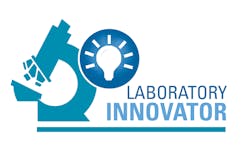Why did you become interested in molecular genetics?
Why is molecular diagnostics important?
Molecular tests are highly accurate diagnostics tools that examine genetic markers to identify what is causing a patient’s symptoms, helping clinicians identify a treatment plan. Real Time-PCR (RT-PCR) can be used to evaluate a patient sample based on the presence or absence of a genetic marker of a pathogen. If a pathogen is present, the test for that pathogen will amplify the genetic marker sequence, indicating that the patient is positive for that pathogen. Standard diagnostic tests that employ the TaqMan strategy typically only look at one genetic marker at a time.
What are the benefits of syndromic assays?
Because many different pathogens produce similar symptoms, there are significant treatment advantages to utilizing highly accurate diagnostic tests that can evaluate more than one genetic marker or pathogen at a time and ensure timely diagnosis. Syndromic panels are designed, so that a panel of tests looking at multiple pathogens at the same time can be selected based on a patient’s symptom(s). When the test is run, it simultaneously evaluates whether a patient is positive for up to 25+ target sequences at once, representing a panel of pathogens known to cause certain symptoms, plus internal controls. Importantly, unlike traditional diagnostic testing, syndromic results can also indicate if a patient is infected with several pathogens at once.
How does digital technology and machine learning allow a diagnostics company to develop tests faster, and what impact does this have on patient care?
When the process is automated, the development of tests takes only a few days from start to finish. In contrast, such a test developed by experienced professionals manually would take more than a year. Since the advent of digitalized platforms, machine learning technology has accelerated the development of syndromic assays.
This includes COVID-19 tests, which can be developed in just a few days. At the start of the pandemic, China made a massive amount of genomic data publicly available, making it possible to use a big-data, auto-surveillance, in-silico platform to sift through the genetic data.
How do you think the field of molecular diagnostics will evolve over the next 3-to-5 years?
The future is already here: COVID-19 diagnostic variant tests are now available and capable of screening COVID-19 and identifying multiple mutant variations in a single reaction. Some of the mutations appear to increase the ability of the virus to bind to the cell receptor and improve the ability of the virus to infect a patient. Being able to know which variant is affecting a specific patient may allow providers to adjust treatment or vaccination strategies.
I see machine learning playing an important role in advancing developments in molecular diagnostics. The new era in diagnostics will both simplify and automate the R&D process to enable scientists to create syndromic tests that meet unmet medical needs, where a scientist or company only needs to have the idea for a test for it to become a reality. In the future, I envision even more sophisticated technologies where a worker could press a key, and the computer would handle all in-silico processes. The only manual step needed would be to validate the test using an actual sample to ensure that it works.
I also predict opposing trends of centralization in large local reference labs, providing quick turnaround times, and decentralization of molecular testing with point-of-care testing. Mobile, point-of-care and at-home diagnostics, combined with telemedicine, will likely see some of the biggegst growth. With at-home diagnostics, it will be easier to test more people within a short period of time. In fact, people would be able to test themselves, before they even start exhibiting symptoms, with high-sensitivity molecular tests.


